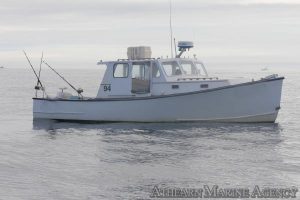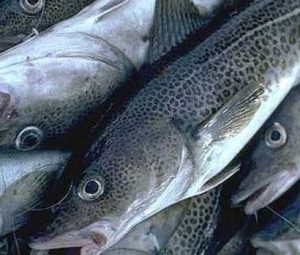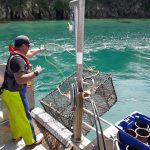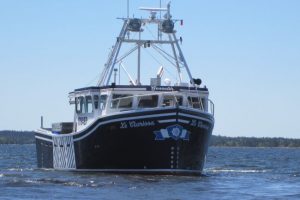Tag Archives: DMR Commissioner Patrick Keliher
Lobster fishery set for reprieve on size limits
 A second delay to implementing minimum gauge and vent sizes for lobsters caught in the Gulf of Maine, Georges Bank and Outer Cape Cod was initiated last week by the American Lobster Board, which operates under the Atlantic States Marine Fisheries Commission (ASMFC), a measure that Maine lobstermen, and Congressman Jared Golden, have hoped and pushed for. The new implementation date would be July 1, 2025, if the measure is adopted by the ASMFC’s American Lobster Board. An earlier delay the ASMFC approved had pushed back to Jan. 1, 2025, the new gauge and escape vent sizes in lobster traps for commercial lobster fisheries in the targeted lobster management areas. When the measure was first approved, it was to take effect based on a “trigger” mechanism. more, >>CLICK TO READ<< 12:52
A second delay to implementing minimum gauge and vent sizes for lobsters caught in the Gulf of Maine, Georges Bank and Outer Cape Cod was initiated last week by the American Lobster Board, which operates under the Atlantic States Marine Fisheries Commission (ASMFC), a measure that Maine lobstermen, and Congressman Jared Golden, have hoped and pushed for. The new implementation date would be July 1, 2025, if the measure is adopted by the ASMFC’s American Lobster Board. An earlier delay the ASMFC approved had pushed back to Jan. 1, 2025, the new gauge and escape vent sizes in lobster traps for commercial lobster fisheries in the targeted lobster management areas. When the measure was first approved, it was to take effect based on a “trigger” mechanism. more, >>CLICK TO READ<< 12:52
Maine’s wharf owners scramble to repair what they can before lobstering season starts
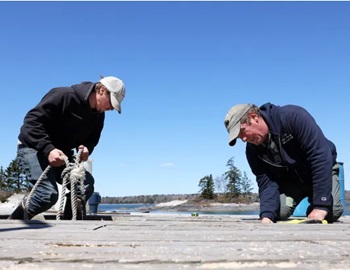 Contractors are hard to come by amid the mounting demand for work to repair damage from the set of January storms that battered the coast of Maine. Now, as lobstering season begins, many on the working waterfront are patching their own wharves, hoping they can hold out until the real work can be done. Chris Hole was busy at work on a sunny Friday morning, taking apart his commercial fishing wharf like a game of Jenga. After pulling up the surface wooden slats, Hole used a fork lift to lower large wooden beams down to the deck. Josh Saxton, Hole’s right-hand man, would then slip between the large gaps in the deck to put the support beams in place. Photos, more, >>CLICK TO READ<< 06:43
Contractors are hard to come by amid the mounting demand for work to repair damage from the set of January storms that battered the coast of Maine. Now, as lobstering season begins, many on the working waterfront are patching their own wharves, hoping they can hold out until the real work can be done. Chris Hole was busy at work on a sunny Friday morning, taking apart his commercial fishing wharf like a game of Jenga. After pulling up the surface wooden slats, Hole used a fork lift to lower large wooden beams down to the deck. Josh Saxton, Hole’s right-hand man, would then slip between the large gaps in the deck to put the support beams in place. Photos, more, >>CLICK TO READ<< 06:43
Data show fewer baby lobsters but fishermen say ‘eggers’ abound
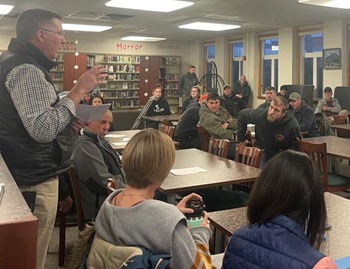 Lobstermen and the agency that oversees them, the Maine Department of Marine Resources (DMR), sparred a little over state data on lobster populations that lobstermen said does not reflect what they see when fishing, when the Zone B Lobster Council met Feb. 21 at the Mount Desert Island High School library. The DMR estimates the number of baby lobsters, called “year of young,” through trawl and ventless trap surveys to project future adult populations and manage the fishery — and to adhere to interstate fishery rules from the Atlantic States Marine Fisheries Commission (ASMFC), an interstate board managing fisheries for 15 states, including Maine. 3 Photos, more, >>click to read<< 12:45
Lobstermen and the agency that oversees them, the Maine Department of Marine Resources (DMR), sparred a little over state data on lobster populations that lobstermen said does not reflect what they see when fishing, when the Zone B Lobster Council met Feb. 21 at the Mount Desert Island High School library. The DMR estimates the number of baby lobsters, called “year of young,” through trawl and ventless trap surveys to project future adult populations and manage the fishery — and to adhere to interstate fishery rules from the Atlantic States Marine Fisheries Commission (ASMFC), an interstate board managing fisheries for 15 states, including Maine. 3 Photos, more, >>click to read<< 12:45
Maine Lobstermen Ask Court to Block State Agency from Enforcing a 24-Hour Location Monitoring Mandate Pending the Resolution of Their Lawsuit
 A group of Maine lobstermen have asked the United States District Court for the District of Maine to temporarily block state officials from enforcing the controversial requirement that lobstering boats be equipped with a 24-hour location monitoring system. At the beginning of January, five Maine lobstermen filed a lawsuit against the Maine Department of Marine Resources (MDMR) Commissioner Patrick Keliher, alleging violations of their Fourth and Fourteenth Amendment rights. “Before the Court is an unprecedented regulation that, if permitted to stand, would require federally permitted Maine lobster fishermen to install a tracking device on their fishing vessels that would monitor their movements on a minute-by-minute basis (and every six hours when the vessel is moored) ‘regardless of landing state, trip type, location fished or target species,’” the motion reads. more, >>click to read<< 06:44
A group of Maine lobstermen have asked the United States District Court for the District of Maine to temporarily block state officials from enforcing the controversial requirement that lobstering boats be equipped with a 24-hour location monitoring system. At the beginning of January, five Maine lobstermen filed a lawsuit against the Maine Department of Marine Resources (MDMR) Commissioner Patrick Keliher, alleging violations of their Fourth and Fourteenth Amendment rights. “Before the Court is an unprecedented regulation that, if permitted to stand, would require federally permitted Maine lobster fishermen to install a tracking device on their fishing vessels that would monitor their movements on a minute-by-minute basis (and every six hours when the vessel is moored) ‘regardless of landing state, trip type, location fished or target species,’” the motion reads. more, >>click to read<< 06:44
Maine lobstermen signal opposition to participating in ropeless testing program
 Maine lobstermen are signaling their hesitation to participate in a multimillion-dollar program the state is launching to test new ropeless technology that the federal government soon may require to protect the endangered North Atlantic right whale. Lobstermen have been largely unhappy with the regulations, fearing that the regulations will destroy the lobstering industry as they know it. Maine’s congressional delegation succeeded in securing legislative approval for a reprieve that stalls the regulations from going into effect until Jan. 1, 2029. Industry groups also have succeeded in taking NOAA to court, where the regulations are still tied up. Even so, the clock is ticking and the Department of Marine Resources wants to be prepared for what it expects is an inevitable regulation. more, >>click to read<< 06:31
Maine lobstermen are signaling their hesitation to participate in a multimillion-dollar program the state is launching to test new ropeless technology that the federal government soon may require to protect the endangered North Atlantic right whale. Lobstermen have been largely unhappy with the regulations, fearing that the regulations will destroy the lobstering industry as they know it. Maine’s congressional delegation succeeded in securing legislative approval for a reprieve that stalls the regulations from going into effect until Jan. 1, 2029. Industry groups also have succeeded in taking NOAA to court, where the regulations are still tied up. Even so, the clock is ticking and the Department of Marine Resources wants to be prepared for what it expects is an inevitable regulation. more, >>click to read<< 06:31
NFWF grants support Maine lobster industry participation in alternative fishing gear testing
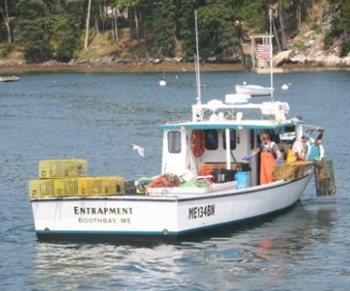 “Alternative gear, also known as “on demand” gear is a long way from being viable for fishermen or for whales,” said DMR Commissioner Patrick Keliher. “It is my goal to make sure we know what gear works, and more importantly what doesn’t work, so when future draft federal regulations come forward, we can draw on the real-world experience of fishermen when determining what the next steps should be.” One award of $1,999,992 will support the evaluation of acoustic geolocation systems that locate gear on the bottom without the benefit of surface buoys which are part of traditional gear configurations. Regional partners will include the Island Institute, Maine Center for Coastal Fisheries, Maine Coast Fishermen’s Association, the Sunrise County Economic Council, and the Gulf of Maine Lobster Foundation. more, >>click to read<< 06:09
“Alternative gear, also known as “on demand” gear is a long way from being viable for fishermen or for whales,” said DMR Commissioner Patrick Keliher. “It is my goal to make sure we know what gear works, and more importantly what doesn’t work, so when future draft federal regulations come forward, we can draw on the real-world experience of fishermen when determining what the next steps should be.” One award of $1,999,992 will support the evaluation of acoustic geolocation systems that locate gear on the bottom without the benefit of surface buoys which are part of traditional gear configurations. Regional partners will include the Island Institute, Maine Center for Coastal Fisheries, Maine Coast Fishermen’s Association, the Sunrise County Economic Council, and the Gulf of Maine Lobster Foundation. more, >>click to read<< 06:09

Decline in young lobsters triggers change in legal catch size
The Atlantic States Marine Fisheries Commissioner approved in May new management measures when the survey of sublegal lobsters declined by 35 percent. The most recent stock survey shows a 39 percent decline. “The fact that we’ve hit the trigger this soon comes as a significant surprise,” DMR Commissioner Patrick Keliher said. “When the Board voted on the Addendum in May, it was anticipated that the trigger would not be hit for a year or two.” Keliher had initially broached to the ASMFC a higher trigger of 38 percent than the 35 percent that passed. But at the latest board meeting, he successfully delayed implementing the first size change from June 1, 2024, as initially set in the Addendum, to Jan. 1, 2025. >>click to read<< 08:08

Hope vs. rope: Can technology save the whales, and Maine’s lobster industry, too?
Along the coasts of Massachusetts and Rhode Island, scientists, engineers, and fishermen are working feverishly to develop a new, high-tech way to harvest lobster – and the result could be the key to the survival of both the U.S. lobster fishery and the imperiled North Atlantic right whale. But farther north in Maine, the epicenter of the fishery, it’s unusually quiet. Only one Maine business is working on the technology, and only a handful of Maine lobstermen will test it. Many won’t even discuss it. The ropeless part is being worked out, but another critical component – an interoperable, open platform to track gear – is far from ready. The new equipment also is, at least for now, prohibitively expensive. One lobsterman said it would cost him nearly $500,000 upfront. >click to read< 16:20
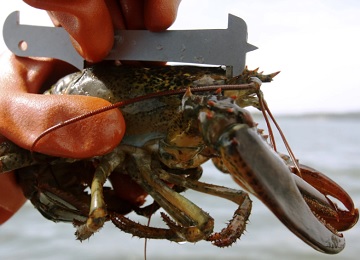
Regulators approve new lobster size limits in Maine to preserve young population
An Atlantic States Marine Fisheries Commission board has approved new measures that could change the minimum and maximum catch sizes for lobster in certain parts of Maine. The fisheries commission said it will gradually implement changes to measurement sizes by fractions of an inch in certain parts of the Gulf of Maine — but only if it observes a 35% decline in the young lobster population through trawl and trap survey data. Recent assessments have shown a 23% decline in juvenile lobsters, said Pat Keliher, commissioner of the Maine Department of Marine Resources. >click to read< 09:01
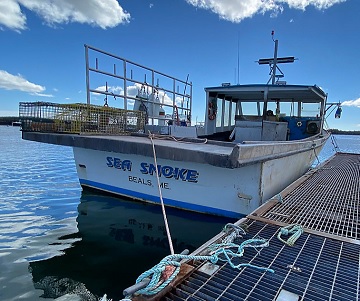
Maine lobster industry must accept that ‘big changes are coming’ despite delay in federal rules, commissioner says
“The work now is critical,” DMR Commissioner Patrick Keliher told the Lobster Advisory Council Wednesday. “The buy-in is critical. The data we’re going to be collecting over the next four years is critical. We can’t have infighting. We have to accept big changes are coming. ”Those changes could include additional regulations to make ropes weaker, a move toward ropeless lobster traps and additional restrictions on fishing grounds. Between now and then, the industry needs to report its harvest to federal officials, participate in a vessel tracking program and find ways to help monitor where endangered whales are migrating, Keliher said. >click to read< 08:49
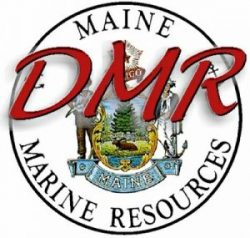
Commissioner’s Update – Good News? Cautiously Optimistic
The Center for Biological Diversity, in their case against the National Marine Fisheries Service, has done an about face. In their first filing, they had asked Judge Boasberg to implement new rules to achieve the required risk reduction within 6 months, but their filing last Friday asked the Judge to implement a two-year process to develop and implement those rules. They also asked the Judge to vacate the current Biological Opinion so that it can be rewritten while the new rules are being developed. Why they changed their position is not known, but DMR, NMFS, MLA, MLU and Mass Lobstermen all asked for a similar process that was two years or longer. In any event, this development is good news, but the Judge must agree before this is final. I am cautiously optimistic that he will agree that time is needed, given the complexity and difficulty of what we are facing. We expect a decision on this case in November. >click to read the rest< 14:01

Island’s fate tied to fishing, residents say: “I think we’re being pushed out”
Make way for windmills. That was one of the worries aired by Deer Isle-Stonington fishermen and small business owners who attended a breakfast economic development meeting at the Stonington town office Friday. A few residents and small business owners said they think the fishing industry is being pushed out to make room for windmills, thus further advancing green energy agendas that Governor Janet Mills and the federal government have adopted. Mike Shepard said he started fishing at age 10 in a “little outboard.” “I’m almost 70 now,” the lobsterman said. “I fished all my life out here. All that time I’ve been fishing. I’ve never seen a whale. It has nothing to do with the whale, it has to do with what they want to do with our waters out here. They want to go green and it’s killing the lobster industry, which is our way of life.” >click to read< 19:36
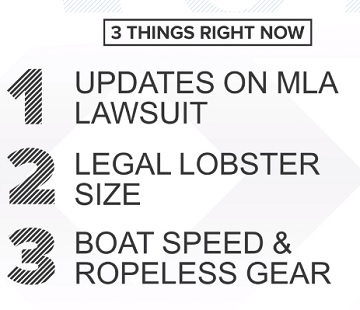
Annual fisheries meeting tackles lobster lawsuits, whale protections
Tuesday in Washington D.C., key players from Maine’s lobster fishery tackled what it considers its most pressing issues. The first issue was an update regarding Judge James Boasberg’s July ruling in the U.S. District Court case involving the Center for Biological Diversity versus Secretary Raimondo and the Maine Lobstermen’s Association. This case made the news in early July after Boasberg ruled regulators aren’t doing enough to protect the right whale. Just days after, he sided with environmental groups in another lawsuit to allow Area 1 to close again to fishermen this coming fall and winter. Another issue was a proposal to shrink the size limit for lobsters over the course of five years in order to replenish the declining population of young lobsters. Also, reduced boat speeds and the future of ropeless lobster traps. >click to read< 20:15
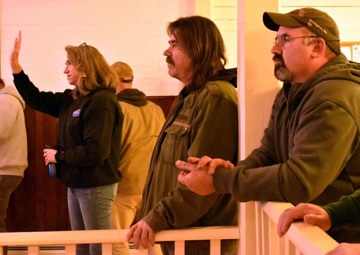
DMR brings news of declining young lobsters, resiliency measures to local lobstermen
“We’re not talking about whales.” Those were among the first words from Kathleen Reardon, lead biologist for the Maine DMR, to lobstermen at Stonington Town Hall on March 31. Both ongoing lawsuits and legislation aimed at protecting right whales from entanglement with lobster trap lines have delayed lobster stock assessments and analysis. But now lobster councils are meeting across the state to hear about a draft addendum to the Atlantic States Marine Fisheries Commission lobster management plan for the Gulf of Maine and Georges Bank, where 90 percent of U.S. landings are. The ASMFC manages near-shore fisheries for 15 states, including Maine. The draft addendum would affect Lobster Management Areas 1 and 3 and off Cape Cod as well as Maine, New Hampshire and Massachusetts. >click to read< 16:37

‘How do we stop it?’ – Lobstermen voice concerns over wind farm development in meeting with regulators
The state Gov. Janet Mills is telling Monhegan Island-area lobstermen to remove fishing gear from the path of a survey vessel, or the Marine Patrol will.,, In text and email messages sent to lobstermen Wednesday morning, DMR Commissioner Patrick Keliher says he has been directed to ask the state Marine Patrol to move gear away from the route if the vessel is unable to continue its work. He also says DMR is working with the vessel to make sure it keeps its operations within a defined pathway. Keliher and other officials in Gov. Janet Mills’ administration did not immediately return requests for comment. >click to read< 10:02
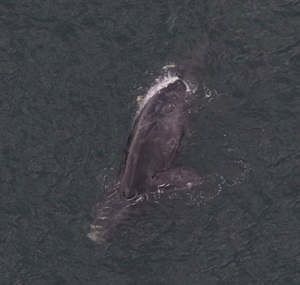
Documents Reveal ‘Catastrophic Impact’ Right Whale Protections Could Have On Lobster Industry
Newly released documents by Maine’s Department of Resources are providing a glimpse of what federal action to protect endangered North Atlantic right whales could look like — including the closure of extensive areas of offshore ocean to lobstering. In an August letter to the head of the agency that reviews proposed federal regulations, DMR Commissioner Patrick Keliher asked for a meeting to go over options for reducing the risk of right whales becoming dangerously entangled in lobster trap gear and rope. That was after conversations with the federal Northeast Fisheries Science Center that brought to light a proposal that could put big swaths of ocean off-limits to lobstering in federal waters known as Lobster Conservation Management Areas, or LCMAs. >click to read< 18:46

Scallop season is underway
The scallop fishing season got underway in eastern Maine earlier this month and is already making news. In the waters between eastern Penobscot Bay and Cobscook Bay, the season for the handful of licensed scallop divers began Nov. 18 but the draggers couldn’t go to work until Dec. 2. In Cobscook Bay, the season for draggers also began Dec. 2 but divers had to wait until Dec. 5 to brave the chilly, turbulent waters way Downeast. >click to read< 20:14

Maine: Second round of meetings scheduled on right whale issue
Earlier this week, DMR Commissioner Patrick Keliher announced that he would hold a second round of meetings with each of the state’s seven Lobster Zone Management Councils to consider area-by-area suggestions of how to deal with the National Oceanic and Atmospheric Administration’s proposed rule that would require a 50 percent reduction of vertical endlines on lobster traps in much of the Gulf of Maine. >click to read< 11:27
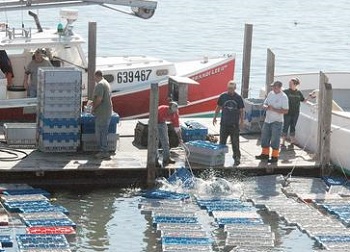
Stonington remains top port in 2018
After a 16 percent drop in 2017, commercial lobster landings and value rebounded in Maine in 2018, bringing in 119,640,379 pounds of lobster for $484,543,633 in ex-vessel value. An increase in boat price, from $3.92 per-pound in 2017 to $4.05 in 2018, helped drive the over $46 million increase in lobster landing value in Maine, which totaled $637,174,944, according to preliminary figures released by the Department of Marine Resources on March 1. >click to read<11:52

Lobster industry blasts proposed regulations intended to protect whales
Maine officials and members of the state’s lobster industry are blasting a new federal report on the endangered right whale, claiming it uses old science to unfairly target the fishery for restrictions.
The Maine Department of Marine Resources, the agency that regulates the $434 million lobster fishery, and the Maine Lobstermen’s Association, the trade group representing Maine’s 4,500 active commercial lobstermen, question the scientific merits of the report from the Northeast Fisheries Science Center, which was issued in advance of next week’s meeting of a federal right whale protection advisory team. “They’re painting a big target on the back of the Maine lobster industry, but the picture isn’t based on the best available science,” DMR Commissioner Patrick Keliher said Thursday. >click to read<09:34
Controversial bill allowing secret tracking devices on lobster boats wins Maine Senate approval
![]() A compromise has been reached over a controversial bill that would allow the Department of Marine Resources to secretly place tracking devices on lobster boats. The measure is aimed at cracking down on violators of lobstering laws. The Maine Lobstermen’s Union had been strongly opposed to the bill, saying it gave the commissioner too much authority by allowing him to covertly track boats. But after a discussion with the commissioner this morning the union now backs the bill. “So we have a lot more people fishing offshore, much more difficult to catch violators offshore,” said Patrice McCarron of the Maine Lobstermen’s Association. McCarron said if allowing investigators to covertly place tracking devices on boats of suspected cheaters leads to more arrests, the industry will be better off. Video, click here to read the story 11:30
A compromise has been reached over a controversial bill that would allow the Department of Marine Resources to secretly place tracking devices on lobster boats. The measure is aimed at cracking down on violators of lobstering laws. The Maine Lobstermen’s Union had been strongly opposed to the bill, saying it gave the commissioner too much authority by allowing him to covertly track boats. But after a discussion with the commissioner this morning the union now backs the bill. “So we have a lot more people fishing offshore, much more difficult to catch violators offshore,” said Patrice McCarron of the Maine Lobstermen’s Association. McCarron said if allowing investigators to covertly place tracking devices on boats of suspected cheaters leads to more arrests, the industry will be better off. Video, click here to read the story 11:30
Maine Lobstermen Support GPS Tracking of Lawbreakers Fishing Vessels – Lobstermen from Swans Island are fed up with the bad behavior of fellow fishermen who violate regulations within the states most valuable fishery. Video, click here to read the story 12:02
Maine fisheries chief moves to suspend license of accused lobsterman
 Theodore Gray, 34, was charged May 9 after Marine Patrol officers found him in possession of 269 lobsters shorter than the minimum size limit, 123 breeding female lobsters that had been marked with a V-shaped notch on their tails, and 20 traps that belong to another licensed lobsterman, DMR officials have said. Gray fishes out of Stonington. Read more here 07:19
Theodore Gray, 34, was charged May 9 after Marine Patrol officers found him in possession of 269 lobsters shorter than the minimum size limit, 123 breeding female lobsters that had been marked with a V-shaped notch on their tails, and 20 traps that belong to another licensed lobsterman, DMR officials have said. Gray fishes out of Stonington. Read more here 07:19
Maine DMR rockweed plan is ready for legislature
 ELLSWORTH — Just in time to meet a deadline set last spring, the Department of Marine Resources (DMR) last Friday sent a proposed comprehensive statewide fishery management plan for rockweed to the Legislature’s Joint Standing Committee on Marine Resources. Read more@fenceviewer 11:55
ELLSWORTH — Just in time to meet a deadline set last spring, the Department of Marine Resources (DMR) last Friday sent a proposed comprehensive statewide fishery management plan for rockweed to the Legislature’s Joint Standing Committee on Marine Resources. Read more@fenceviewer 11:55
Committee studies elver license rules
The Legislature’s Marine Resources Committee was scheduled to hold a work session Wednesday morning on a controversial bill that would force elver fishermen with licenses issued by any of Maine’s four federally recognized tribes to have those licenses validated in writing by the Department of Marine Resources. Read more@fenceviewer 16:34






































